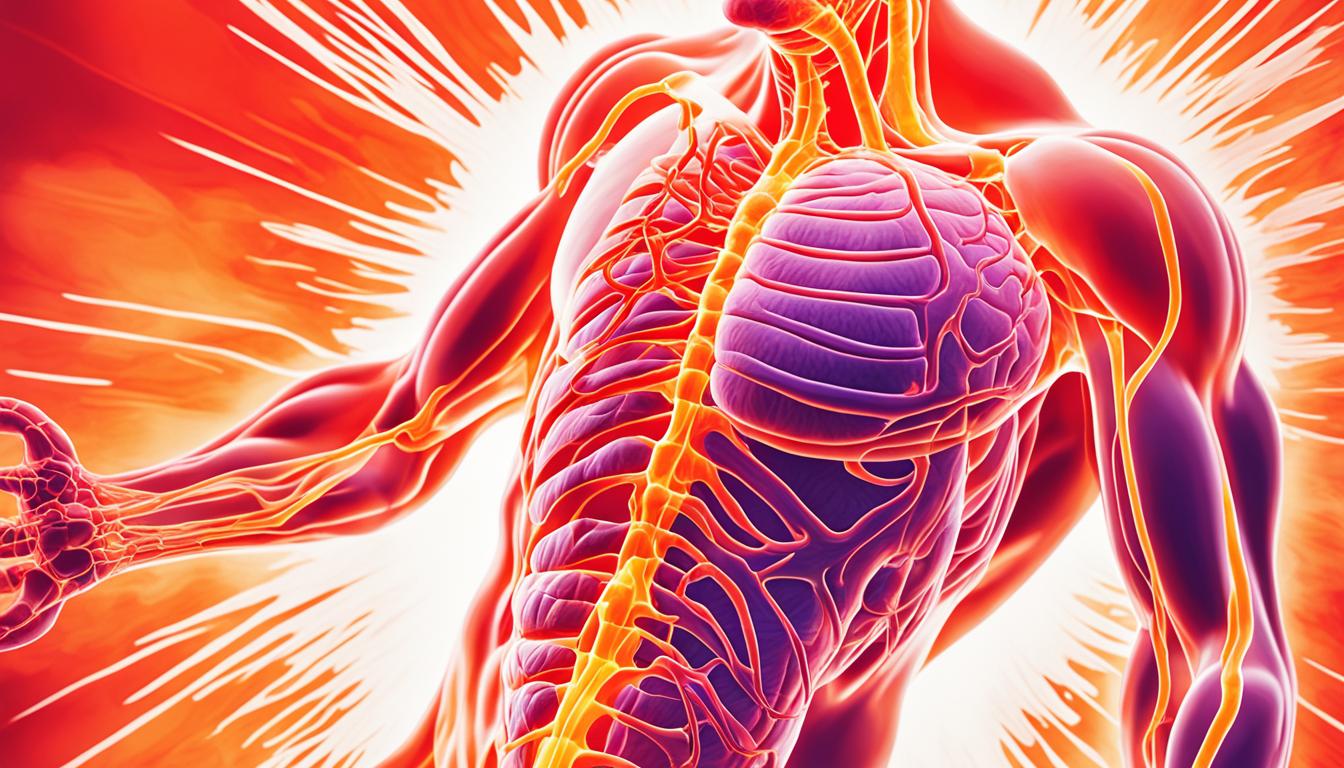Prostatitis is a common issue in the urinary tract of men. It affects many men in the United States every year. There are several types, like chronic prostatitis and acute bacterial prostatitis.
The causes of prostatitis change with the type. The cause of chronic prostatitis isn’t clear but might involve microorganisms or immune responses. Acute and chronic bacterial prostatitis happen when bacteria enters the prostate through the urethra.
Prostatitis shows up with many symptoms. For example, individuals with chronic prostatitis might feel pain in the groin, bladder, or back. They could also have pain during ejaculation and problems with urination.
Diagnosing prostatitis includes a full evaluation. This involves checking your medical history and a physical exam. Doctors might also use tests like a urinalysis or blood tests.
Antibiotics and pain medicines are common treatment options. But stem cell therapy is a new, promising method. It can help reduce inflammation and repair the prostate. Stem cells are injected into the prostate to start the healing process.
Key Takeaways:
- Prostatitis is a common urinary tract problem in men.
- It encompasses different types, including chronic prostatitis, acute bacterial prostatitis, chronic bacterial prostatitis, and asymptomatic inflammatory prostatitis.
- The causes of prostatitis range from microorganisms to bacterial infections.
- Common symptoms include pain in the pelvic area, urinary symptoms, and discomfort.
- Diagnosis involves medical history assessment, physical examination, and medical tests.
- Stem cell therapy offers an innovative approach for relieving prostate inflammation and promoting healing.
Causes and Risk Factors of Prostatitis
Prostatitis is a complex condition with many causes and risks. It’s important to know these for prevention and care. The reasons for prostatitis differ by its type.
Chronic Prostatitis/Chronic Pelvic Pain Syndrome:
Chronic prostatitis links to many factors. These include microorganisms, chemicals in urine, immune response, and nerve issues. Their mix leads to the swelling and pain in the pelvis.
Acute and Chronic Bacterial Prostatitis:
Bacterial infections mainly cause these types. They enter through the urethra into the prostate. Escherichia coli (E. coli) is a big culprit. It causes urgent need to urinate, pain when urinating, and fever.
Risk Factors:
Several things can raise your prostatitis risk. These include nerve damage in the lower urinary tract, stress, and urinary tract infections (UTIs). Nerve damage makes you more prone. Stress can lower your ability to fight infections. If you have a history of UTIs or often get them, prostatitis is more likely.
Knowing the causes and risks lets you make choices to lessen these. It’s also key to get help when needed.
| Causes of Prostatitis | Risk Factors |
|---|---|
| Chronic Prostatitis/Chronic Pelvic Pain Syndrome | Nerve damage in the lower urinary tract |
| Acute and Chronic Bacterial Prostatitis | Psychological stress |
| Lower urinary tract infections | |
| Recurrent or difficult-to-treat UTIs |
Symptoms and Diagnosis of Prostatitis
Prostatitis can show many different signs, based on its type. Knowing these signs and getting the right diagnosis are key for good treatment.
Prostatitis Symptoms
- Chronic prostatitis/chronic pelvic pain syndrome: You might feel pain around your prostate, or in the groin, bladder, penis, or lower back. You could also hurt when you ejaculate, when you pee, or feel like you need to pee a lot.
- Acute bacterial prostatitis: This kind comes from an infection and can cause more severe symptoms. You may have a fever, chills, and feel pain when you pee. It might be hard to pee and you could feel discomfort in your lower back and pelvic area.
- Chronic bacterial prostatitis: Symptoms are like acute prostatitis but not as bad and last longer.
Some folks with prostatitis show no obvious symptoms called asymptomatic prostatitis. Even if you have no symptoms, it’s still important to get checked.
Prostatitis Diagnosis
Doctors check many things to diagnose prostatitis properly. They look at:
- Personal and family medical history: This includes your symptoms, health history, and family history of urinary or prostate issues.
- Physical examination: They do a digital rectal exam to feel the prostate’s size, texture, and tenderness.
- Medical tests: Some tests help confirm the diagnosis. They may check your urine, measure PSA levels in your blood, and even do a biopsy if cancer is suspected.
While these steps are helpful, prostatitis is complicated. Doctors sometimes need a team approach. They might talk to specialists to make sure they get the diagnosis right and plan the best treatment.
| Types of Prostatitis | Symptoms |
|---|---|
| Chronic prostatitis/chronic pelvic pain syndrome | Pain or discomfort in the groin, bladder area, penis, scrotum, or lower back. Pain during or after ejaculation. Urinary symptoms like pain during urination, increased frequency, and urgency. |
| Acute bacterial prostatitis | Fever, chills, pain during urination, urinary retention, lower back pain, pelvic discomfort. |
| Chronic bacterial prostatitis | Similar symptoms to acute bacterial prostatitis, but usually less severe and persistent. |
Stem Cell Therapy for Prostate Inflammation Relief
Stem cell therapy is new and exciting. It helps those with an inflamed prostate, offering relief. These special cells can change into different types, helping to heal tissues.
This therapy targets the inflammation in the prostate. It involves injecting stem cells directly. This way, it uses the body’s own healing power. Since it’s done without surgery, it’s a hopeful option for treating prostatitis.
Still, more studies are needed to fully understand the therapy’s up and downs for prostatitis. As the world of medicine advances, so does the potential of stem cell therapy. It might bring hope to those suffering from prostatitis.

